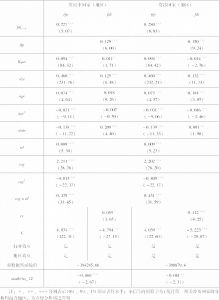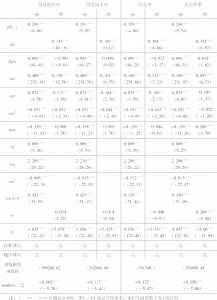论文
中国企业对外直接投资的自我选择效应与学习效应
摘要
本文利用中国工业企业微观数据,构建包含Probit模型的联立方程,检验研发创新背景下企业全要素生产率的提升到底源自对外直接投资的自我选择效应还是学习效应,并根据投资区位和对外直接投资类型的不同,对实证结果进行稳健性检验。结果显示:对外直接投资的自我选择效应和学习效应显著存在,且学习效应占主导地位,当企业向发达国家(地区)投资、对外投资类型为综合型时,对外直接投资对全要素生产率的提升作用最为明显。同时,环境规制通过研发创新影响企业全要素生产率,且与企业生产率之间呈现“倒U形”关系,证实了“波特假说”的存在。
作者
齐亚伟 (1984- ),女,江西财经大学信息管理学院教授,硕士研究生导师,研究方向为数量经济学。
检索正文关键字
论文目录
- 引言
-
1 数据来源与模型设定
- 1.1 数据来源
- 1.2 联立方程的构建
-
2 实证结果及分析
- 2.1 对外直接投资与企业生产率的联立结果
- 2.2 对外直接投资与企业生产率联立的稳健性检验
- 3 结语
相关文献
查看更多>>>




